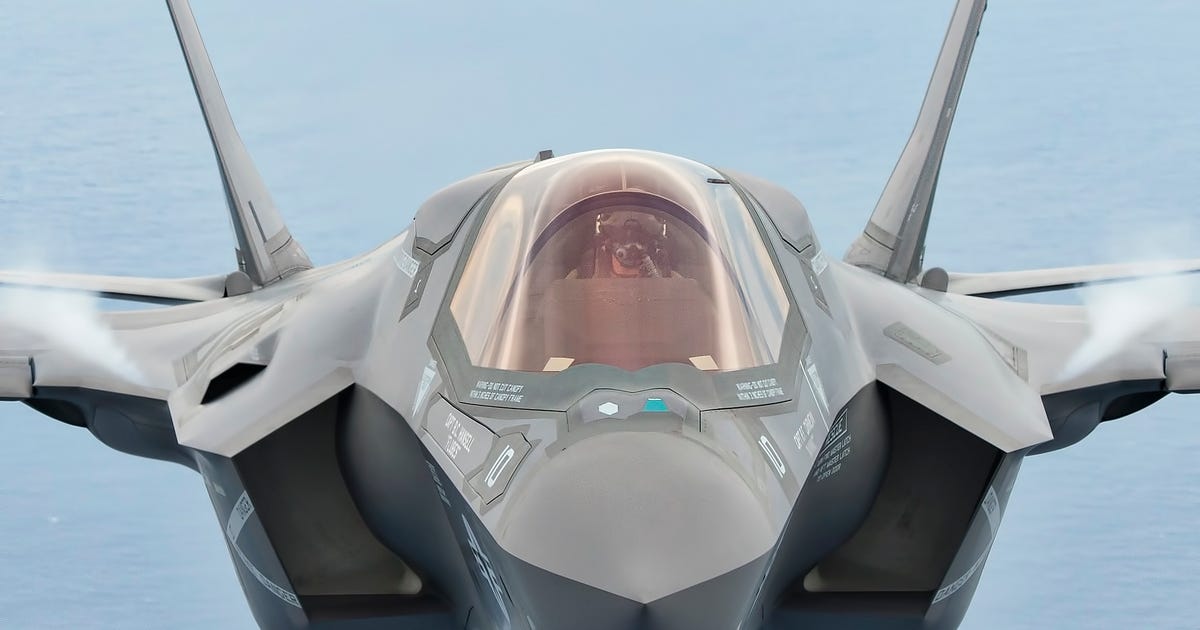At Crossroads, F-35 Still Faces Challenges
By Lara Seligman
Over the past five years, the F-35 joint strike fighter has overcome massive cost overruns, schedule delays and a host of technical snags. The US Air Force, Navy and Marine Corps jets are now on track to meet key deadlines, and proponents of the program brag that costs have remained steady since 2010.
But as the Pentagon prepares for a new challenge — tripling production of the next-generation fighter jet — F-35 program leaders are bracing for an uphill climb.
Next year, F-35-maker Lockheed Martin will deliver 43 aircraft to the services. During the three years after that, the Pentagon will ramp up production to more than 120 aircraft each year, according to Lt. Gen. Chris Bogdan, head of the F-35 joint program office. The JPO is concerned the F-35 manufacturing base will not be able to keep up with such a drastic surge, he said.
“Acquisition rule of thumb says we probably, year-to-year, don’t want to do more than about 50 percent what you did the year before,” Bogdan said Wednesday at the ComDef conference in Washington. “If you do the math and you are going to triple in three years, you are not on a 50-percent-per-year slope.”
“That gives me some pause,” Bogdan said.
And it’s not just the US military that is buying more F-35s. This week, Italy flew its first jet; later this month, Norway will celebrate the rollout of its first aircraft.
It is only the beginning of the global ramp up: by the end of 2019, the JPO will have 493 operational jets around the globe, compared with just 126 today. In the next four years, the JPO will stand up 17 new operating locations, more than half of them abroad.
The burden is on the manufacturing base to keep up with this global demand, Bogdan said.
“So we have to create a global sustainment enterprise that can sustain an airplane no matter where it is, no matter which partner has, it no matter what [Foreign Military Sales] customer has it, in a way that’s effective for the warfighter,” he said.
The F-35 supply base may not be able to sustain that workload, Bogdan cautioned. As production spikes, maintainers must not only keep pace with everyday repairs, but also modify existing and future aircraft due to concurrent development and production.
While the Marine Corps earlier this summer declared initial operating capability with the latest Block 2B software, the final configuration, Block 3F, will not deliver until mid-2017. At that point, each aircraft must be upgraded to the latest software configuration to reach full capability.
And since the Pentagon decided to move to initial production before completing the test program, maintainers must install fixes to operational planes as problems crop up with the test fleet. Maintenance teams are busy installing these modifications to existing aircraft and jets coming off the ramp, for instance the engine fix that stemmed from a fire at Eglin Air Force Base, Florida, last summer.
“So when we have those 493 airplanes out in the field in 2019, guess how many will be in what I consider to be the right configuration? Not a one,” Bogdan said. “Every airplane coming off the line now and coming off in the next two and a half years, plus all the airplanes we’ve built already, will need some form of modification to get them up to the full capability that we promised the war fighter.”
Each aircraft confined to the depot for modification is one less plane the services can use to train pilots and maintainers, Bogdan emphasized. This is a particular problem for the Air Force, which must meet certain training requirements in order to declare IOC in 2016.
To address this gap, the JPO is sending field teams to do F-35A depot work at the bases, rather than bringing the jets to the depots, Bogdan said. This saves time on the front and back end of the process, allowing the maintenance teams to move the jets through modifications more quickly.
The Air Force also may be able to borrow Navy and Marine Corps planes, or even jets from partner nations, to complete some training, Bogdan said.
“The biggest constraint to the mod program right now other than money — because it costs an awful lot of money to do that — is can the service, can the partner afford to keep the airplane down that long without their pilots flying?” Bogdan said. “So we have to try to balance that.”
At the same time, the JPO still has work to do on the jet’s Autonomic Logistics Information System (ALIS), which manages maintenance and sustainment for the entire fighter fleet, Bogdan noted. ALIS “has not met its potential yet,” he said.
The F-35 program is no longer experiencing schedule delays or cost overruns, and has surmounted major technical issues with the engine, helmet, tail hook and more, Bogdan emphasized. But despite this progress, the JPO has a lot of work to do.
“From my perspective, the program is at a pivot point,” Bogdan said. “We used to be slow and steady — we are passed slow and steady now.”
Back to Top
